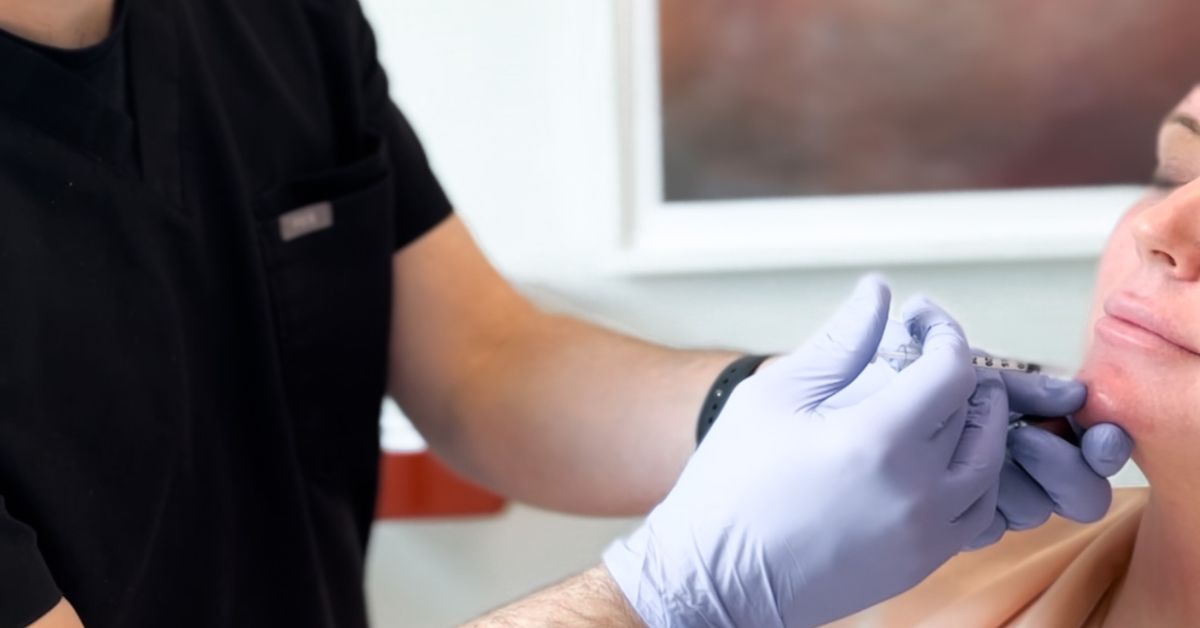Camas, WA
Injectables
Skin Rejuvenation
Hair Restoration & Growth
Shop By Category
Scars left behind after a biopsy can be a source of concern for many individuals. While they are a natural part of the healing process, their appearance can sometimes be undesirable. One effective method for reducing the visibility of these scars is microneedling. This minimally invasive cosmetic treatment encourages collagen production, which helps smooth and even out the skin’s surface. Read on for a look at how microneedling can help with biopsy scars.
Biopsy scars occur when a sample of tissue is removed from the skin for medical examination. Depending on the size of the biopsy and the body’s healing process, scars can range from faint lines to more noticeable, raised marks. These scars form as part of the body’s natural repair mechanism, where collagen fibers work to close the wound. However, excessive collagen buildup can sometimes result in scar tissue that is more prominent than the surrounding skin, leading people to seek treatments to improve the scar’s appearance.
Microneedling is a non-surgical cosmetic procedure that uses tiny, sterilized needles to create micro-injuries in the skin. These micro-injuries trigger the body’s healing response, stimulating collagen and elastin production. By promoting new skin cell growth, microneedling can help to reduce the appearance of scars, including biopsy scars, by evening out skin texture and minimizing the depth of the scar tissue. This treatment is popular for a variety of skin concerns, from acne scars to wrinkles, and is now being explored for its efficacy in treating biopsy scars.
Scars, including those from biopsies, are often the result of an overproduction of collagen during the healing process. Microneedling breaks up the dense layers of collagen in the scar tissue and promotes the formation of healthier skin. The micro-injuries created by the needles encourage the skin to regenerate and replace the damaged tissue with smoother, more uniform skin. Over time, this leads to a reduction in scar visibility, and the skin begins to appear more even and supple.

Collagen is a protein found in the skin that provides structure and elasticity. When the skin is punctured during a microneedling session, the body responds by sending collagen to the treated area to repair the micro-damage. This influx of collagen not only aids in the healing of the micro-injuries but also works to repair the existing scar tissue. As more collagen is produced, the skin becomes firmer, smoother, and more resilient, improving the appearance of biopsy scars over the course of multiple treatments.
While there are various treatments available for reducing scars—such as laser therapy, chemical peels, and surgical scar revision—microneedling offers a less invasive and more cost-effective option. Unlike laser treatments, microneedling doesn’t use heat, reducing the risk of pigmentation changes in darker skin tones. Additionally, it requires minimal downtime, allowing patients to resume normal activities more quickly. For those looking to minimize biopsy scars without extensive procedures, microneedling is a valuable option that provides gradual, natural-looking results.
Patience is key when it comes to microneedling for scar treatment. While some individuals may notice an improvement after the first session, it typically takes multiple treatments to see significant results. The skin’s healing process takes time, and collagen production continues for weeks after each session. Most people require between 3-6 treatments, spaced about 4-6 weeks apart, to achieve noticeable improvements in scar texture and appearance. Results will vary depending on the size and age of the biopsy scar, as well as individual skin characteristics.
Before undergoing microneedling, a topical numbing cream is applied to the treatment area to minimize discomfort. The microneedling device, which contains fine needles, is then moved across the skin to create the micro-injuries. The procedure generally takes 30-60 minutes, depending on the size of the area being treated. After the session, the skin may appear red and feel slightly tender, similar to a mild sunburn. Most patients can return to their daily activities immediately after the procedure, though sun protection is essential during the healing process.
While the idea of tiny needles puncturing the skin may sound intimidating, microneedling is generally well-tolerated by most individuals. The use of a numbing cream helps minimize discomfort, and the sensation is often described as mild tingling or slight pressure. Any post-treatment redness and tenderness usually subsides within a few days. The benefits of reduced scar visibility far outweigh the temporary discomfort for many patients, making microneedling a popular choice for those looking to improve their skin’s appearance.

After a microneedling session, proper aftercare is essential to ensure optimal results. The skin will be more sensitive in the days following treatment, so avoiding sun exposure and harsh skincare products is crucial. Keeping the skin hydrated and using a gentle, hydrating cleanser will aid in the healing process. Additionally, using broad-spectrum sunscreen is a must to protect the skin and prevent pigmentation issues. With proper aftercare, the skin can heal effectively, allowing collagen to work its magic on the scar tissue.
Most individuals with biopsy scars can benefit from microneedling, especially those with shallow to moderate scars. However, you should consult with a qualified skincare professional before undergoing the procedure. People with active skin infections, acne outbreaks, or certain skin conditions such as eczema or psoriasis may not be suitable candidates for microneedling. Additionally, those with a history of keloid scarring should approach microneedling with caution, as the treatment may stimulate excess collagen production, worsening the scar.
While microneedling is generally considered safe, there are potential side effects that patients should be aware of. Temporary redness, swelling, and mild discomfort are common immediately following treatment. In rare cases, patients may experience bruising or infection if aftercare instructions are not followed. Work with a licensed and experienced professional who uses sterile equipment to minimize these risks. Despite these potential side effects, microneedling remains a low-risk procedure with a high success rate for improving the appearance of scars.
Both microneedling and laser treatments are popular options for scar reduction, but they work in different ways. Laser treatments use heat and light energy to target scar tissue, which can sometimes result in pigmentation changes, especially for individuals with darker skin tones. Microneedling, on the other hand, is gentler and relies on the body’s natural healing process to rejuvenate the skin. For those looking for a more subtle, gradual approach to scar treatment, microneedling may be the better option.
To maintain the improvements made by microneedling, ongoing care and maintenance treatments may be necessary. While initial results can last for months, the skin will naturally continue to age and change over time. Regular microneedling sessions, combined with a consistent skincare routine, can help sustain the results and prevent new scar tissue from forming. Proper microneedling maintenance, including the use of sun protection and hydration, is also essential to preserve the long-term benefits of the treatment.
Now that you know how microneedling can help with biopsy scars, you can make an informed decision about pursuing this treatment. Whether used on its own or in combination with other therapies, microneedling can deliver lasting, natural-looking results that enhance your skin’s health and appearance.